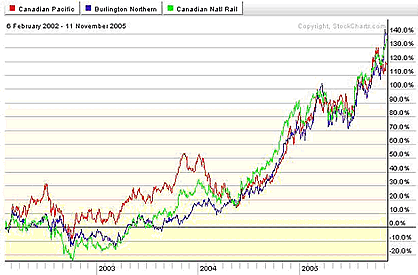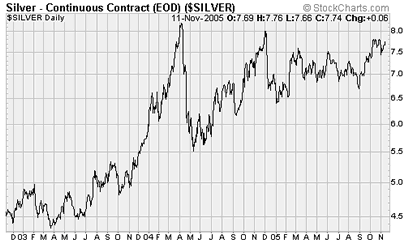| Home | About Us | Resources | Archive | Free Reports | Market Window |
Cascadia: The Earth’s Treasure ChestBy
Tuesday, November 15, 2005
Picture yourself in the most pristine wilderness the world has to offer. Cold brisk air tumbles effortlessly down the faces of countless, nameless snow-clad peaks. You’re in a convertible, speeding in and out of tunnels, around tight mountainside curves and across gorges. The sun warms the air, and for the first time that day, you the notice the sweet smell of pine... In 2003, that’s the wilderness I went to find. But almost by accident, while I was there, I found a perfect play on the world’s fastest growing bull market ... a “pure play” ... if you will, on one of the largest shipments of raw goods in human history... You can get in on this monopoly on world trade it if you like, but first let me tell you about the astounding place called Cascadia... Cascadia is not a country, but if it were, its GDP would be comparable to that of Brazil, making it one of the world’s 10 largest economies. It achieves this productivity with a population the size of Belgium. English is the official language. It has low political risk. Ownership laws are strong, and strategically, it’s untouchable. What it lacks in people, it makes up for with natural resources. It’s jam packed, including the largest oil field on the planet...and sickening supplies of precious metal, lumber, meat, energy and grain. You could call Cascadia a treasure chest... the most bountiful, untapped geographic region in the world. So where the heck is it? Cascadia is a ‘region’ in the Pacific Northwest. It’s a corridor running from San Francisco to Alaska such that, if it were to become a country on its own, eight states would be redrawn - Alaska, British Columbia, Alberta, Washington, Oregon, Idaho, Montana, and California. “In reality, Cascadia is more like a state of mind, one in which inhabitants are throwing off the shackles of East coast and European thought for a freer, less stodgy way of life,” wrote Jim Rogers in 1992, in his first book, Investment Biker... And how can we profit from it? Not only is this place loaded with raw materials, it lies along 1,800 miles of prize coastline just across the pond from China, and the rest of Asia...it has a giant ready market for its raw materials. Location brings another benefit to Cascadia... it carries all the trade between Asia and the rest of North America... a very lucrative business. If Cascadia were a human body, the railroads would represent the veins and arteries. Each day, hundreds of trains run over thousands of miles, hauling nothing but the most essential materials...fertilizer, energy, chemicals, grain, industrial products, concrete and other building blocks. The railroads have the basic materials transport business sewn up. There simply isn’t any other way to bring the treasure to market. There are three major Cascadian railroads: BNSF (BNI), Canadian National (CNI), and Canadian Pacific (CP). Things haven’t been this good since the 1850’s. Business is roaring. Check out the chart of these three stocks below:
But there’s a problem: There simply isn’t room for any more trains on the network. Said another way, the railroads are running at maximum capacity. There’s not much the train companies can do to increase capacity. Most trains are already hauling the legal maximum number of freight cars. There’s no room for double track over most of the network, and it would take years to build a new railroad. So what do they do? The only thing they can do. They increase prices. And increased prices mean increased profits. Higher shipping rates, no threat of new competition and the collision of Asian demand with Cascadian supply... you don’t want to miss this train. Good Investing, Tom Dyson Market NotesSILVER POISED FOR NEW HIGHS After digesting the big gains made in late 2003/early 2004, silver is approaching multi-year highs. Silver investors are still waiting for the SEC to approve a silver Exchange Traded Fund (ETF) similar to existing gold ETFs like the iShares Comex Gold Trust (IAU). For now, investors can buy large silver producers Coeur d’Alene Mines (CDE), Apex Silver Mines (SIL), and Pan American Silver Corp. (PAAS) for exposure to the metal. Below is a three-year chart of silver:
|
Recent Articles
|



